After a year of war in Ukraine, Raiffeisen Bank International (RBI) AG has announced its gradual withdrawal from Russia. The news came in late March at a shareholders’ meeting where Raiffeisen CEO Johann Strobl announced that the company was considering either selling its subsidiary bank in Russia or withdrawing this asset from the group. Experts describe Raiffeisen’s departure as a disaster that would bring the country closer to de facto disconnection from SWIFT and seriously complicate Russian business deals with its remaining foreign partners.
Raiffeisen has faced a dilemma in recent months. On the one hand, it has been under increasing pressure from international players — above all the European Central Bank and the US Treasury — and on the other hand, it is being held back by record profits in Russia and unfavourable exit conditions. Given this situation, the sensational announcement may not be as straightforward as it seems: while demonstrating its determination to leave, Raiffeisen may actually try to delay the process for as long as possible, taking the wait-and-see approach.
Novaya Gazeta Europe correspondent Ira Purysova has outlined different scenarios for the future of Raiffeisen in Russia, showing how Russian regulators have managed to lock the bank in a gilded cage.
In mid-April, a construction crane removed the huge Raiffeisen Bank sign from a building in central Moscow. This came two weeks after it finally became clear that RBI had decided to leave Russia. The process of leaving the Russian market may take up to seven months. The bank has pledged to start reducing its business activity in Russia.
After the announcement, the bank’s subsidiary decided that it was now pointless to maintain brand recognition and did not extend contracts for rooftop ads.
The first step towards closing the business was the restriction of SWIFT-transfers in dollars for a large portion of the bank’s clients and raising the minimum sum for dollar and euro transfers — first to 10,000 and then to 20,000 (the restrictions on other currencies remained the same)
According to the Financial Times, Raiffeisen Bank now accounts for 40-50% of all payments between Russia and the rest of the world. Their SWIFT transfers usually take days and sometimes only a few hours, making Raiffeisen one of the easiest and most accessible tools to get money out of Russia.
Andrey Barkhota, a financial market expert, believes the restrictions on currency transfers are a signal to international regulators that the bank is serious about its decision. It can be interpreted as a willingness to comply with the sanctions — in order to do so the bank is even refusing to provide services that it has effectively monopolised.
But one should not expect the bank to leave Russia in the near future. According to Barkhota, it is likely that Raiffeisen will delay
the process as long as possible. This is motivated both by the restrictions of Russian regulators, who have effectively taken foreign companies hostage, and by the profits the bank makes in Russia.
In 2022, its operation in the Russian market brought the company a record €2.2 billion — more than 60% of its total profits. How much the restrictions will cut into the bank’s revenues is not clear: the new conditions still allow large transfers from individuals and legal entities — importers who need cross-border transfers and who would suffer from the bank’s withdrawal.
Both the SWIFT restrictions and the dismantling of rooftop signs are demonstrative actions meant to assure Western countries of the bank’s impending withdrawal from Russia. Monopolists do not need advertisements.
The end of stability
The history of Austria’s Raiffeisen Bank — one of the largest banks in Central and Eastern Europe — dates back to the late 19th century. The bank entered the Russian market in 1996 under the name Raiffeisenbank Austria.
By 2007, Raiffeisen was Russia’s largest bank with foreign capital, boasting more than 1.3 million clients.
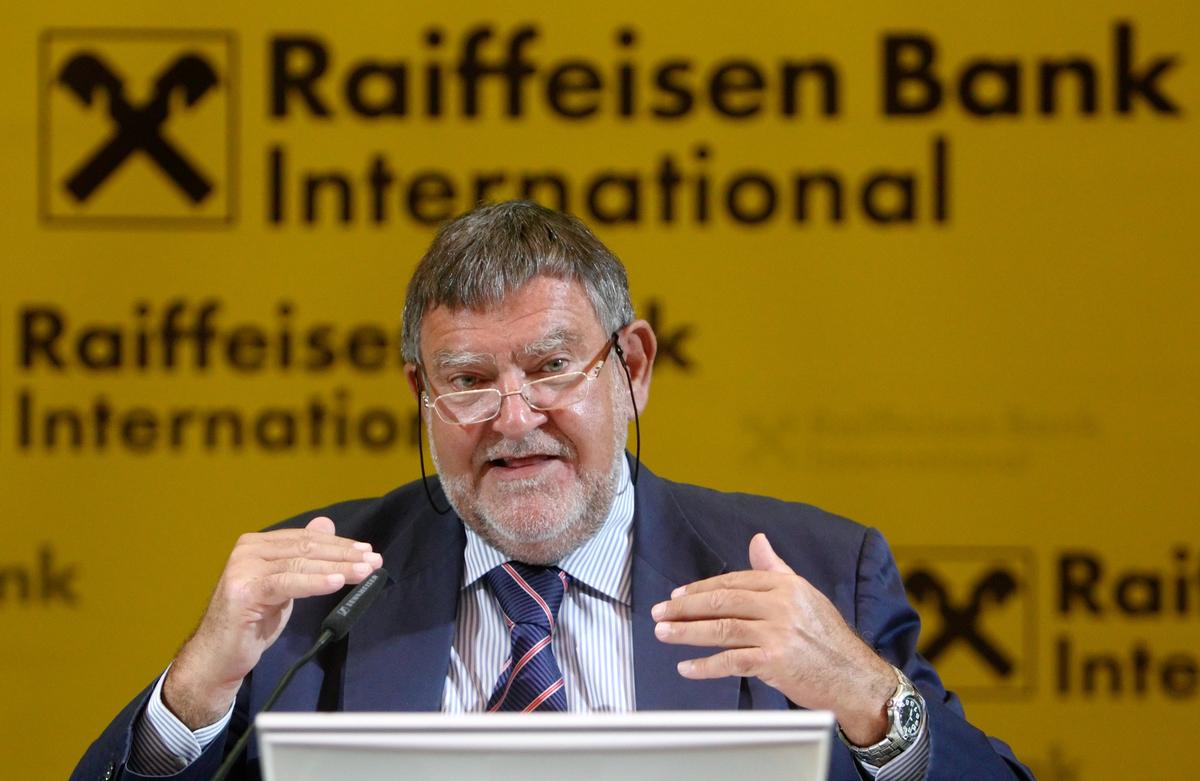
Herbert Stepic. Photo: REUTERS/Heinz-Peter Bader
Business was going very well. In an interview with Vedomosti in February 2013, the former head of the bank, Herbert Stepic, could not name any downside to operating in Russia. Although he said that the government needed to fix the legal system to ensure economic development, he saw good future opportunities in Russia.
“The most important prerequisite for the country’s economic growth is stability. You see, countries that have instability don’t get direct investments, because nobody invests in an insecure market.
Stability has emerged under Putin’s rule (and I know it wasn’t there before). This means that Russian and international companies can work — and have been working for years, I would say quite safely — in a stable environment,” Stepic said at the time.
By 2022, Raiffeisen’s subsidiary had 90 branches across Russia and a client base of more than 4 million. Raiffeisen was the tenth largest bank in terms of assets.
However, with the outbreak of full-scale war in Ukraine, the stability of the Russian market ended.
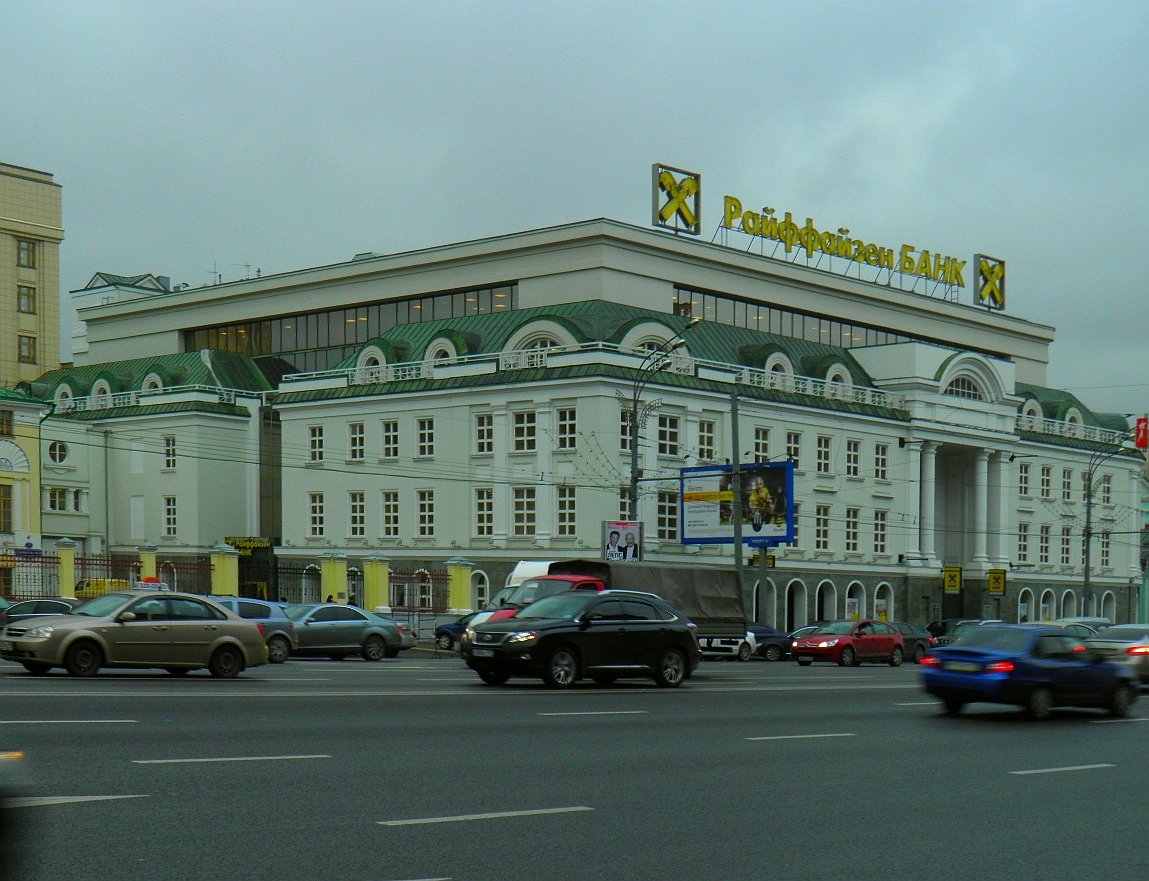
Raiffeisen’s office in central Moscow. Photo: Wikimedia Commons, CC BY 3.0
A trap for foreigners
When foreign companies started their mass exodus from Russia in the first weeks of the war, Raiffeisen Bank decided to continue operations and agreed to the restrictions imposed by the Russian Central Bank.
According to Forbes, bank executives told investors in early March that they had no intention of leaving the market and that the Russian subsidiary could still make a profit under such conditions.
There were indeed profits even during the first weeks of panic after 24 February. Although the number of the bank’s clients in Russia dropped by 600,000 (14.7%) in the first quarter of 2022 and was even lower than in early 2021, the net profit remained at a level comparable to the same period of the previous year: €96 mln in the first three months.
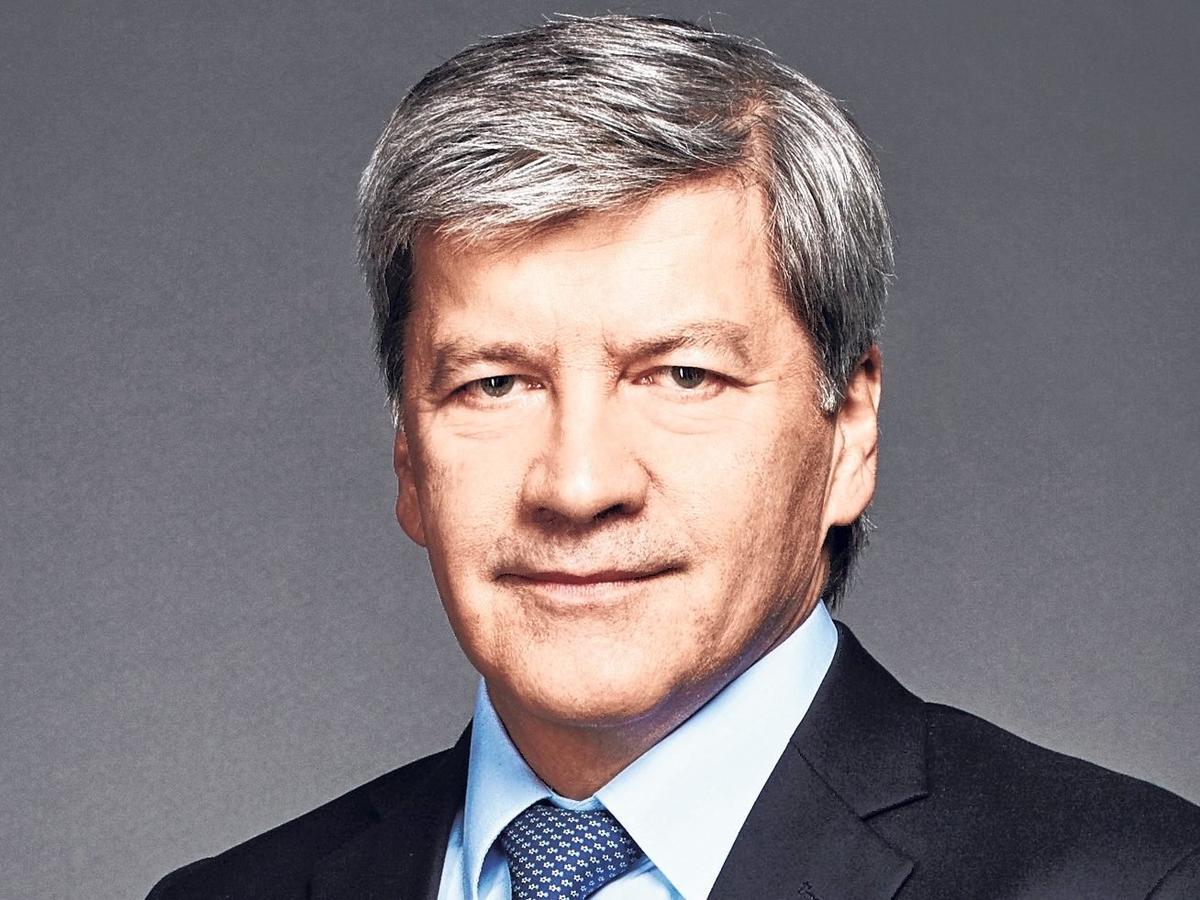
Johann Strobl. Photo: Raiffeisen Bank
Raiffeisen announced in mid-March 2022 that it was considering a “carefully planned exit” from Russia. Raiffeisen CEO Johann Strobl then revealed that the group had received “non-binding offers” to buy the subsidiary.
But the group did not take active steps to leave Russia (at least publicly) even when other foreign players began doing so in various ways.
Raiffeisen Bank continued to operate in Russia during all this time and made record profits. RBI’s profits in 2022 were two and a half times what they were in 2021 (€1.4 billion). Most of these profits came from Russia. The success was largely due to sanctions that unplugged many Russian banks from SWIFT.
For the most part, the organisation has been unable to withdraw profits from the Russian market: last year, Russia introduced regulations allowing residents from “unfriendly” countries to receive dividends only into bank accounts from which funds cannot be transferred abroad. In December, the law was relaxed somewhat, allowing to withdraw up to half of one’s income from Russia, but only for companies that intend to continue operating in Russia.
Raiffeisen also had big losses: the reputational cost of continuing to operate in Russia had caused the company’s shares to plummet by more than 40 percent since the war began.
Russian regulators also gradually reduced the freedom for foreign firms to withdraw from the market.
In August 2022, Vladimir Putin signed a decree prohibiting the sale of certain financial institutions (including the subsidiaries of foreign banks) until the end of the year without special presidential approval. Later, the document was extended till the end of 2023.
According to Russian Deputy Finance Minister Alexei Moiseev, this decision was a reaction to the Western ban on Russian banks operating abroad. Subsidiaries of banks VTB and Otkritie, for example, had their European assets blocked.
Barkhota believes that Russia’s retaliatory measure against non-residents could force Western countries to start a dialogue on exchanging the assets of Russian banks stuck in Europe for the assets of foreign banks in Russia.
In effect, Russia has taken foreign subsidiaries hostage for the purpose of the exchange. Raiffeisen was one of those banks trapped this way.
Between a rock and a hard place
“A bank is not a sausage stand that you can close in a week”, Strobl told an FT reporter last March in reference to Raiffeisen’s fate in Russia.
Economist Oleg Vyugin believes that the Raiffeisen had initially planned to wait out the war crisis: “Apparently, they hoped that business as usual would continue and the situation would resolve itself.”
Ivan Fedyakov, founder and head of the INFOLine analytical agency, explains that the fact that Raiffeisen was not under sanctions made it an important thread of connections, including financial ones, which allowed European countries to interact with foreign companies in Russia and help them leave. But, as Fedyakov points out, the banking group has spent too much time in Russia. The profits that it made off the state of affairs have irked many across the globe.
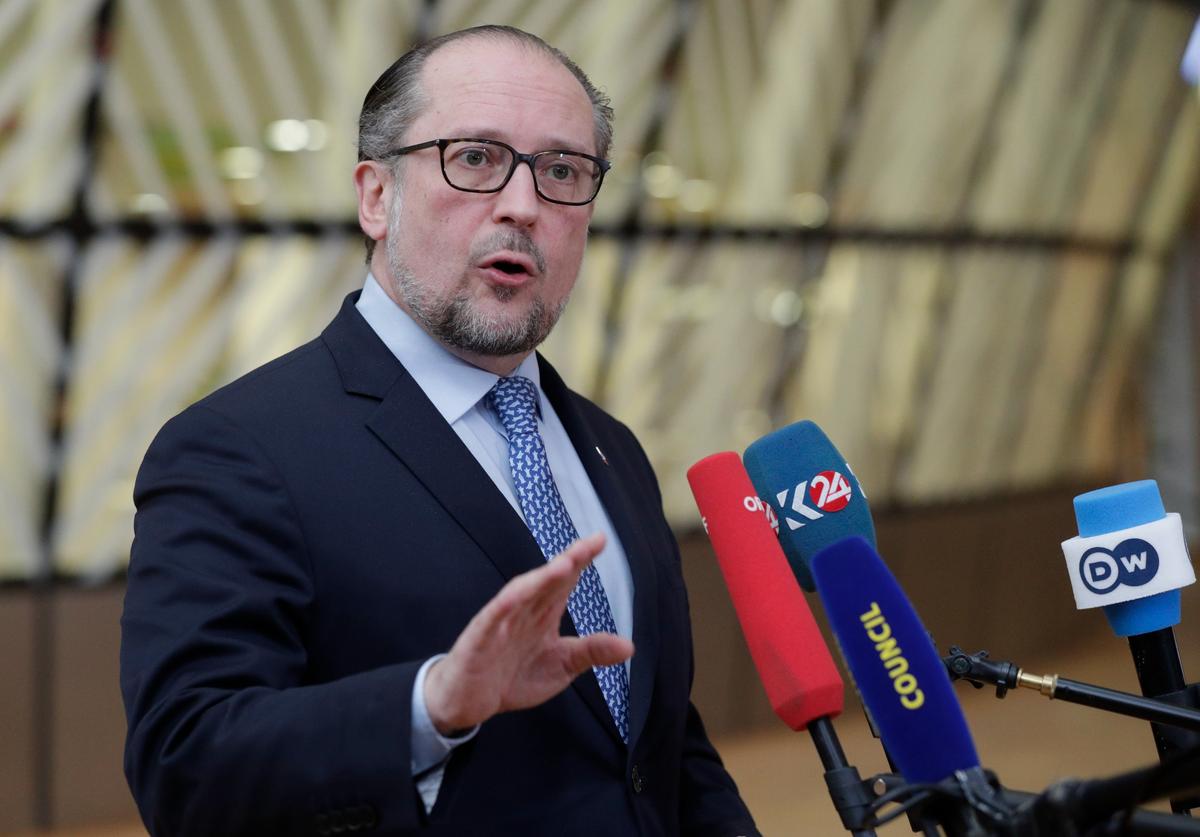
Alexander Schallenberg. Photo: EPA-EFE/OLIVIER HOSLET
Back in Austria, Raiffeisen has been under no pressure since the war began. In an interview with Der Standard in March, Austrian Foreign Minister Alexander Schallenberg said that the bank had the right to choose its own strategy for operating in Russia and approved of the organisation’s wait-and-see tactics.
Schallenberg also pointed out that, according to the Swiss IMD and the University of St Gallen, less than 9% of foreign companies, including banks, have left Russia. For example, Hungary’s OTP Bank and Italy’s UniCredit continue to operate, although they too are considering an exit.
Nor has there been pressure from other politicians: according to FT, many Austrian ministers and MPs are closely linked to Raiffeisen, which is the “home bank” for the ruling centre-right Austrian People’s Party (ÖVP).
Globally, however, the reaction to Raiffeisen’s continued operations in Russia has been somewhat different. In February 2023, Ukraine introduced sanctions against the bank’s top management. In addition, Reuters reported, the Office of Foreign Assets Control (OFAC) of the US Department of the Treasury launched an investigation in connection with the bank’s Russian business. OFAC asked the bank for details of its operations in Russia, the partially occupied Donbas, Ukraine, and Syria, including transaction details of certain clients. At the end of March, Reuters also reported that the European Central Bank had demanded that Raiffeisen leave the Russian market or at least provide an exit plan.
Political scientist and European politics expert Tatiana Romanova points out that the international outcry was due not so much to the bank securing transactions from Russia but rather to its providing payment holidays for mobilised Russians.
Like all banks in Russia, Raiffeisen’s subsidiary had to offer this service, which to the rest of the world means indirect support for the war in Ukraine.
Attitudes towards Raiffeisen could also potentially be influenced by the political situation around Austria itself. For the Kremlin, it is still a non-NATO country. Furthermore, Austria’s policy towards Russia has traditionally been seen as pragmatic. The Austrian parliament includes the right-populist Freedom Party (FPÖ), a pro-Kremlin EU party that even had a cooperation agreement with the ruling United Russia party from 2016 to 2021. FPÖ now takes a neutral stance on the war in Ukraine, but that still plays into Putin’s hands: in the European Parliament, for instance, FPÖ delegates very rarely oppose anti-Russian resolutions, in many cases abstaining from voting. And in an Austrian parliamentary session this March, members of the FPÖ left the room during an address by Volodymyr Zelensky.
Though the FPÖ is now in opposition in Austria, the Kremlin can still see the ruling centre-right ÖVP as a force to be negotiated with. Austria, like Switzerland, has a policy of neutrality — this is why Vienna has not been directly involved in providing military and technical assistance to Kyiv since the war began. Moreover, last spring Austrian Chancellor Karl Nehammer met with Vladimir Putin in the suburbs of Moscow. Nehammer said the visit was not at all a friendly one, but nonetheless he became the first European leader to visit Russia after 24 February 2022.
The pressure of foreign regulators could actually force Raiffeisen to look for ways to exit Russia, notes Valeriy Zinchenko, senior partner of the Pen&Paper law firm. According to him, the possible amount of sanction-related difficulties, including fines, may exceed the potential profits of the group’s Russian branch.
In theory, if Raiffeisen continues to operate in Russia, the consequences for the bank could be grave — it might even lose its licence, political analyst Romanova notes. She recalls the case of France’s BNP Paribas, which in 2014 was fined $8.9 bn for violating US sanctions against Cuba, Iran and Sudan. However, both she and other experts interviewed by Novaya-Europe doubt that there will be actual sanctions in the case of Raiffeisen Bank.
As Barkhota notes, the main argument in favour of RBI leaving Russia is the possible pressure on Raiffeisen’s branches in Central and Eastern Europe if the bank continues to operate as it is now. The bank would risk client outflow, reduced profits, and transaction restrictions.
Novaya-Europe sent a request to Raiffeisen Bank asking how the decision to leave the Russian market was made and what it cost. The bank refused to divulge this information.
Ways out
Experts single out four scenarios of how things might develop for Raiffeisen in Russia:
- The RBI will postpone its market exit for as long as possible and continue to operate;
- The RBI will sell its business in Russia;
- Russian assets will be withdrawn from the RBI;
- The bank will gradually reduce the number of services it provides in Russia, but its structure will remain as is.
Barkhota, who finds the first scenario the most plausible, notes that from a business point of view, it is not at all profitable for Raiffeisen’s shareholders to leave Russia because to them the Russian market is a “goose that lays golden eggs”.
Because Raiffeisen Bank has pretty much monopolised SWIFT transactions in Russia, Barkhota explains, it would have to sacrifice half of its profits if it leaves. The most pragmatic option, in his opinion, would be simply to endlessly update the plans for winding down operations until the crisis is finally over.
If the bank decides to sell its Russian assets, a domestic player is likely to be a buyer. Valery Zinchenko of Pen&Paper believes that, given the current legislation, it is the only option that could win the approval of the Russian leadership. In the case of Raiffeisen, one should expect both a full sale of assets to a major player (most likely, one of the big state banks), and an exchange of assets.
According to sources of Frank Media, in September of last year, RBI held negotiations with Russia’s VTB bank leadership on exchanging the assets of its subsidiary (VTB Bank Europe) for the Russian assets of Raiffeisen. However, it seems that the deal fell through. In March, Der Standard wrote that RBI might exchange its assets for those of Sberbank’s European subsidiary. Sberbank CEO Herman Gref later denied that such negotiations were taking place.
According to Barkhota, the main downside to exchanging assets is the inability to objectively evaluate the value of RBI assets in Russia and of a Russian bank abroad so that the deal would satisfy both parties.
There are several obstacles to the sale of assets, as well. Firstly, selling a bank means negotiating a special exception with the Russian authorities. 2,000 companies are currently on the waiting list for such permission from the Foreign Investment Commission of the Russian Ministry of Finance. The commission meets three times a month and considers no more than seven applications per meeting. At this rate, leaving the Russian market could take years on end.
Secondly, the sale will likely occur at a very large discount. Oleg Itskhoki, economics professor at UCLA, says that from the perspective of Raiffeisen’s shareholders the most important goal is to avoid selling the company “for one ruble”. The situation is exacerbated by Russian regulations. Foreign companies can now only exit a Russian business if at least 10% of the transaction, which must be conducted with a discount of 50% or more off the asset’s market worth, is paid into the Russian budget.
“Several largest financial organisations in Russia have enough money [to purchase Raiffeisen Bank],” Barkhota points out. “But there’s a catch: it is forbidden to sell assets to companies under sanctions. How do they get their money then?”
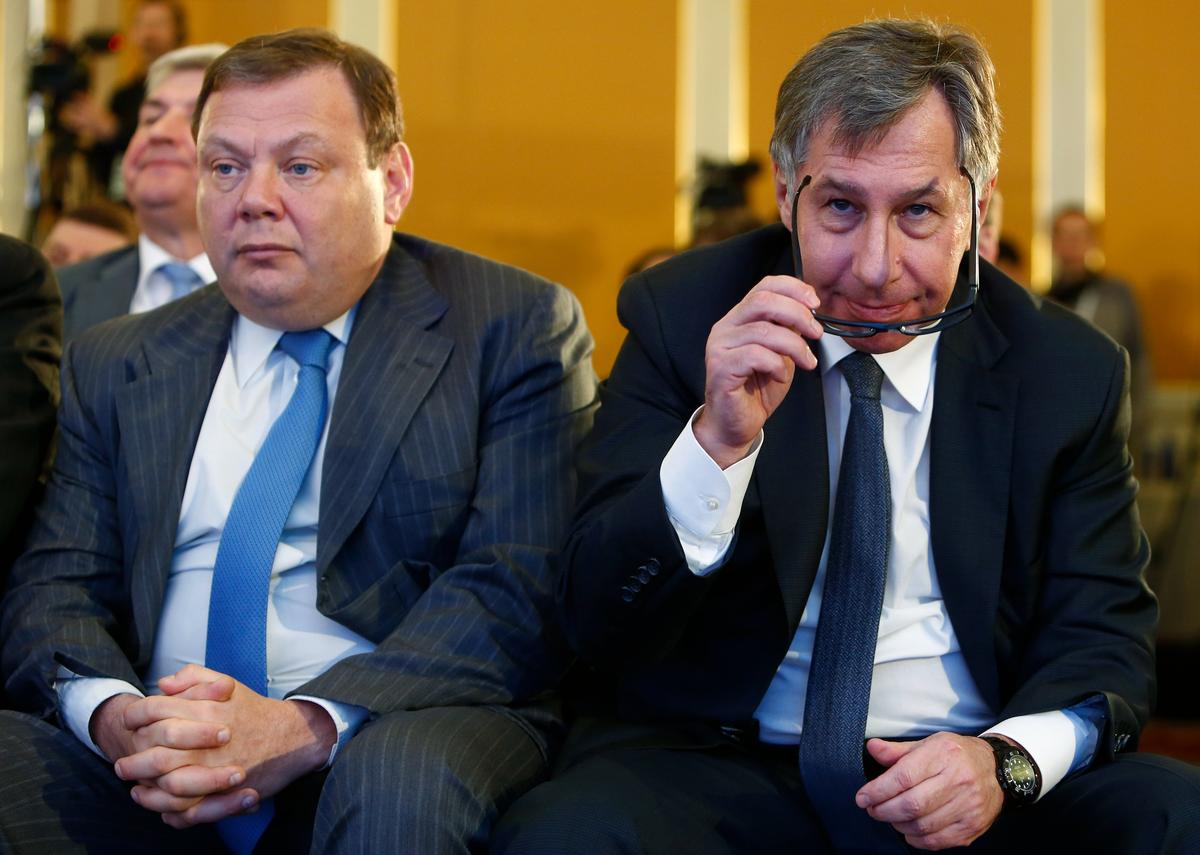
Pyotr Aven (right) and Mikhail Fridman. Photo: REUTERS/Sergei Karpukhin
Barkhota finds it extremely unlikely that Russian assets will be withdrawn from the RBI. This scenario is similar to the deal that Alfa Bank’s founding fathers, Mikhail Fridman and Pyotr Aven, are trying to pull off. On paper, they want to sell the bank to a business partner, Alfa co-founder Andrei Kosogov. Being an invested party, he is likely to act not as a shareholder but as a depositary who is only holding them until they can be sold profitably. Barkhota believes that while it is possible for the management of Raiffeisen’s Russian branch to act as such a depository while the bank is run remotely, this plan is too complicated to implement.
Oleg Vyugin suggests another scenario, which would circumvent all restrictions — very slowly winding up business in Russia. First, the bank stops granting loans, then it starts closing accounts — first to legal entities, then to individuals.
“This is the path that Citigroup has been following for over a year now. In my view, it’s the most realistic option, because in other cases the risks are too high.
If you hand over the bank to its management, it will immediately fall under sanctions. The same will happen if a Russian oligarch buys the bank. And Raiffeisenbank will immediately become uninteresting [to clients] if it is under sanctions”, Vyugin notes.
Novaya-Europe sent an inquiry to Raiffeisen Bank to find out, among other things, which exit scenario the company is primarily considering. The bank declined to comment. A Raiffeisen International spokesman reiterated what the bank had already said in a statement in late March.
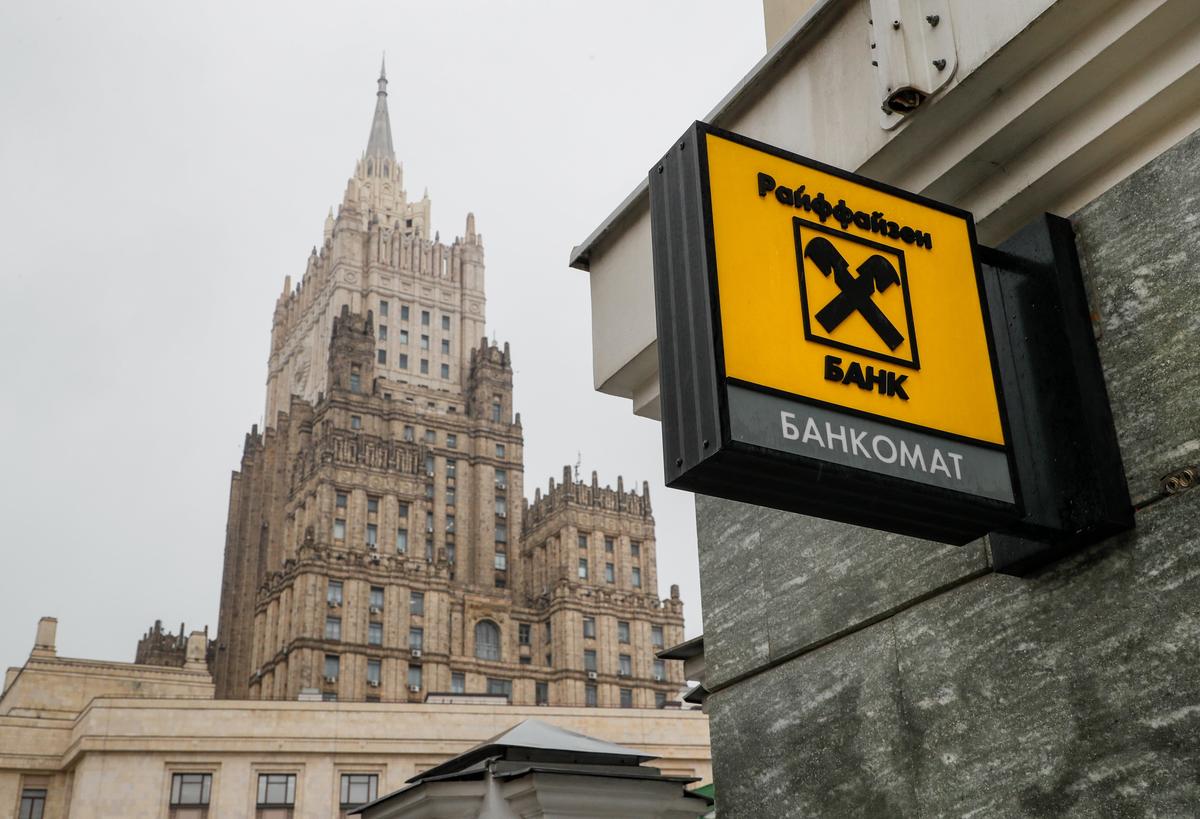
A Raiffeisen office next to the Russian Foreign Ministry in Moscow. Photo: EPA-EFE/YURI KOCHETKOV
Heading towards isolation
Ivan Fedyakov describes the departure of Raiffeisen Bank and the closure of its correspondent accounts as a disaster: it is, in a sense, as close as possible to cutting Russia off from SWIFT. The fewer banks there are that can carry out cross-border transfers, the closer Russian citizens and businesses are to financial isolation.
As Oleg Vyugin explains, Raiffeisen remains one of the few banks in Russia that legal entities can use for cross-border transfers. Other major banks that have access to SWIFT include Gazprombank. The EU and the US have not imposed their toughest sanctions against it because Gazprombank services gas settlements, and these sanctions would effectively isolate it from the dollar and euro systems.
Similarly, international transfers were until recently available at Rosselkhozbank (RSHB) due to its servicing of the Ukrainian grain deal, even though it has been disconnected from SWIFT.
Raiffeisen’s market exit will make a big difference to firms that import goods into Russia: some are already preparing to change their patterns of procuring supplies from abroad.
“The European Commission has solved the SWIFT problem quite elegantly”, Fedyakov argues. “Officially blocking SWIFT for Russia would create a precedent that would be perceived very negatively in many other countries, because they will see that they could be treated the same way one day. In addition, SWIFT is an independent organisation, so the European Commission has no direct influence on it. But because so many foreign financial groups have left the Russian market, and several more will leave in the near future, cross-border SWIFT transfers will be out of the question for Russians. Payments will only be possible through third countries with which Russia has direct financial relations. This will be a disaster for the economy.”
Oleg Itskhoki is more relaxed in his assessment of Raiffeisen’s market exit. He thinks that one bank, connected to the international system and handling all transactions, would be enough to keep the economy intact.
Raiffeisen Bank did not respond to Novaya-Europe’s question about what will happen to the bank’s employees and clients after it leaves Russia. Zinchenko notes that if a foreign bank leaves the country by transferring assets to a large Russian bank, the transition for clients, especially individuals, will be the least painful. But analysts warn that the overall situation will still get worse: Raiffeisen has traditionally been used for cross-border deals. With its departure, these are likely to fade into oblivion. Without them, the subsidiary will hardly differ from other Russian banks.
In any case, we should not expect Raiffeisen to leave any time soon. The implementation of any of the scenarios for winding up business in Russia will take no less than a month. Especially since the bank’s own management is not particularly interested in leaving, and Raiffeisen’s home country Austria is not ready to force the bank into a complete break with Russia.
Join us in rebuilding Novaya Gazeta Europe
The Russian government has banned independent media. We were forced to leave our country in order to keep doing our job, telling our readers about what is going on Russia, Ukraine and Europe.
We will continue fighting against warfare and dictatorship. We believe that freedom of speech is the most efficient antidote against tyranny. Support us financially to help us fight for peace and freedom.
By clicking the Support button, you agree to the processing of your personal data.
To cancel a regular donation, please write to [email protected]

